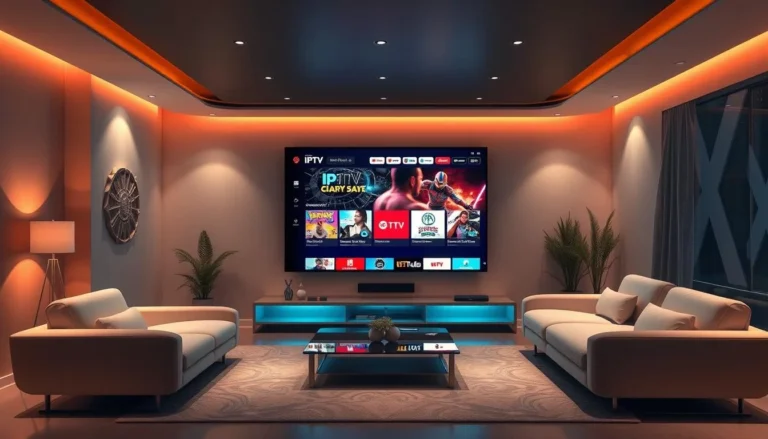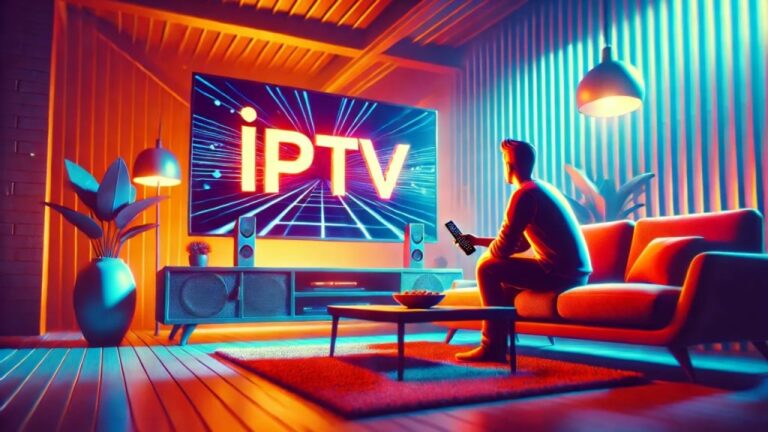Post Contents
Exploring the Revolutionary Technology Behind IPTV with 4K
The way we consume entertainment has evolved drastically over the years. From bulky televisions with limited channels to the on-demand streaming services of today, technological advancements have reshaped our viewing experiences. One such transformative development in recent years is the rise of IPTV with 4K technology. If you’re not familiar with IPTV or 4K, don’t worry. This article will break down how these two technologies work together to offer a revolutionary television experience that is more immersive, flexible, and stunning than ever before.
What is IPTV?
Internet Protocol Television, or IPTV, is a modern alternative to traditional methods of broadcasting television content, such as cable and satellite. Unlike the traditional television model where content is delivered via satellite signals or coaxial cables, IPTV transmits television programming through the internet. This means that instead of relying on physical infrastructure to carry television signals, IPTV sends media in the form of digital packets over the internet, using IP networks to ensure smooth and high-quality delivery.
IPTV comes with several advantages. For one, it allows for greater flexibility in terms of content delivery. Since everything is transmitted over the internet, viewers can access their favorite shows, movies, or sports events on-demand, without being tied to a specific schedule. Furthermore, IPTV offers access to a broader variety of channels and content than traditional cable or satellite TV. With IPTV, you can watch shows and movies from all around the world, not just local broadcast stations.
But what makes IPTV truly stand out in the current digital age is its capacity to deliver high-quality content. This is where 4K technology comes into play.
Introducing 4K Technology
4K, also known as Ultra High Definition (UHD), refers to a television resolution that offers four times the pixels of Full HD (1080p) television. Specifically, 4K has a resolution of 3840 x 2160 pixels, compared to the 1920 x 1080 pixels of Full HD. The increased pixel count provides sharper, more detailed images, which is especially noticeable on large screens. Whether you’re watching a movie, a live sports event, or a documentary, the clarity and depth provided by 4K technology makes for a more immersive viewing experience.
In practical terms, 4K brings out the finer details in every frame. The textures of a sports car speeding down a highway, the intricate details of a landscape, or the fine lines on a human face—4K allows you to experience these details in their full glory. The result is a picture that is so vivid, you may feel like you’re sitting right there in the scene.
4K technology requires a significant amount of data to transmit, which is where the internet connection becomes a crucial factor. Without fast internet speeds and the right technology, streaming 4K content can lead to buffering or poor-quality images. Fortunately, IPTV with 4K is specifically designed to overcome these hurdles.
IPTV with 4K: The Synergy of Two Revolutionary Technologies
Now that we understand IPTV and 4K technology individually, let’s look at how the two work together to deliver a superior entertainment experience. The combination of IPTV’s internet-based content delivery with 4K’s high-definition resolution allows for smooth, high-quality streaming, even in regions where traditional cable infrastructure may not reach.
- High-Speed Data Transmission: One of the biggest challenges of streaming 4K content is the enormous amount of data required to send such high-resolution videos. A typical 4K stream can use up to 25 Mbps (megabits per second) of internet bandwidth. However, with IPTV’s reliance on broadband internet, it can make use of modern high-speed fiber-optic connections and broadband networks to deliver 4K content seamlessly. This allows IPTV providers to offer uninterrupted, high-definition streaming, even in remote areas where traditional cable TV might struggle.
- Fiber Optics and Faster Internet: The backbone of IPTV technology is its use of fiber-optic cables and other high-speed data transmission systems. Fiber-optic technology allows for much faster internet speeds, which is essential for streaming 4K content. Compared to the slower copper cables used in traditional cable TV networks, fiber optics can handle much larger volumes of data with far less signal degradation over long distances. As a result, IPTV services are increasingly able to deliver high-quality, buffer-free 4K streams, even in rural or underserved areas.
- Advanced Compression Technologies: Delivering 4K content through IPTV requires efficient compression methods to make sure that the vast amount of data involved can be transmitted quickly and without losing quality. Compression technologies like HEVC (High-Efficiency Video Coding) or H.265 are widely used in IPTV with 4K. These technologies reduce the size of the data packets while maintaining video quality, ensuring that 4K content can be streamed without overloading the viewer’s internet connection.
- Global Accessibility: Perhaps one of the most significant advantages of IPTV with 4K is its ability to provide high-definition entertainment to people in areas with limited access to traditional cable infrastructure. Fiber optics and broadband networks can be deployed more efficiently than cable lines, allowing IPTV providers to reach rural, remote, or underserved areas where cable and satellite services might not be available. In many cases, this means that people living in remote regions can now access the same high-quality entertainment as those in urban areas, breaking down barriers in access to entertainment.
The Viewer Experience: How IPTV with 4K Enhances Entertainment
Now that we’ve discussed the underlying technology, let’s focus on how IPTV with 4K enhances the viewer’s experience.
- Immersive Sports Viewing: One area where IPTV with 4K shines is in the viewing of live sports. The clarity provided by 4K allows fans to see every detail of the game, whether it’s the expression on a player’s face, the speed of the ball, or the crowd’s reaction. For instance, watching a soccer game in 4K allows viewers to zoom in on the action without losing resolution, a feature that traditional HD or SD broadcasts simply cannot match. This makes sports more engaging, and with IPTV, fans can watch their favorite teams from anywhere in the world, without the limitations of traditional TV broadcasts.
- Cinematic Movies and TV Shows: For movie lovers, IPTV with 4K transforms the home viewing experience into something akin to a cinema experience. The level of detail and color accuracy offered by 4K can make you feel like you’re sitting in the middle of the action. Whether you’re watching a blockbuster movie or a critically acclaimed TV series, 4K ensures every scene is rendered in stunning detail, making for a more captivating experience.
- Real-Time Events and News: IPTV with 4K also enhances the way we consume live news and events. From political debates to music festivals, the ability to watch these events in 4K resolution makes them feel more immediate and realistic. The ability to see fine details, such as facial expressions or the subtleties of a speaker’s gestures, adds a new layer of intimacy to the viewing experience.
- On-Demand Content: IPTV allows viewers to access a vast library of on-demand content, ranging from movies and documentaries to TV shows and sports events. With the addition of 4K, this on-demand content becomes more visually spectacular, offering crisp, lifelike visuals. Moreover, IPTV enables flexibility in how you watch. You can start a show on one device, pause it, and pick it up on another, all in stunning 4K quality.
Real-World Impact: Transforming Television Watching Habits

IPTV with 4K has transformed how viewers around the world watch television. As the adoption of this technology has grown, so has the appreciation for its ability to deliver high-quality, immersive viewing experiences that traditional cable and satellite services cannot match. People are no longer limited to watching television in a specific format or at specific times; instead, they enjoy the flexibility and convenience that comes with IPTV, all while experiencing a level of detail and clarity that was once reserved for the big screen.
For example, consider a family living in a remote village with no access to traditional cable TV. With IPTV, they can connect to high-speed internet, stream the latest 4K movies, and enjoy world-class television, just like someone living in a major city. Similarly, a sports fan living in a region where local sports channels are unavailable can subscribe to IPTV services offering 4K streams of major sporting events, ensuring they never miss a game again.










